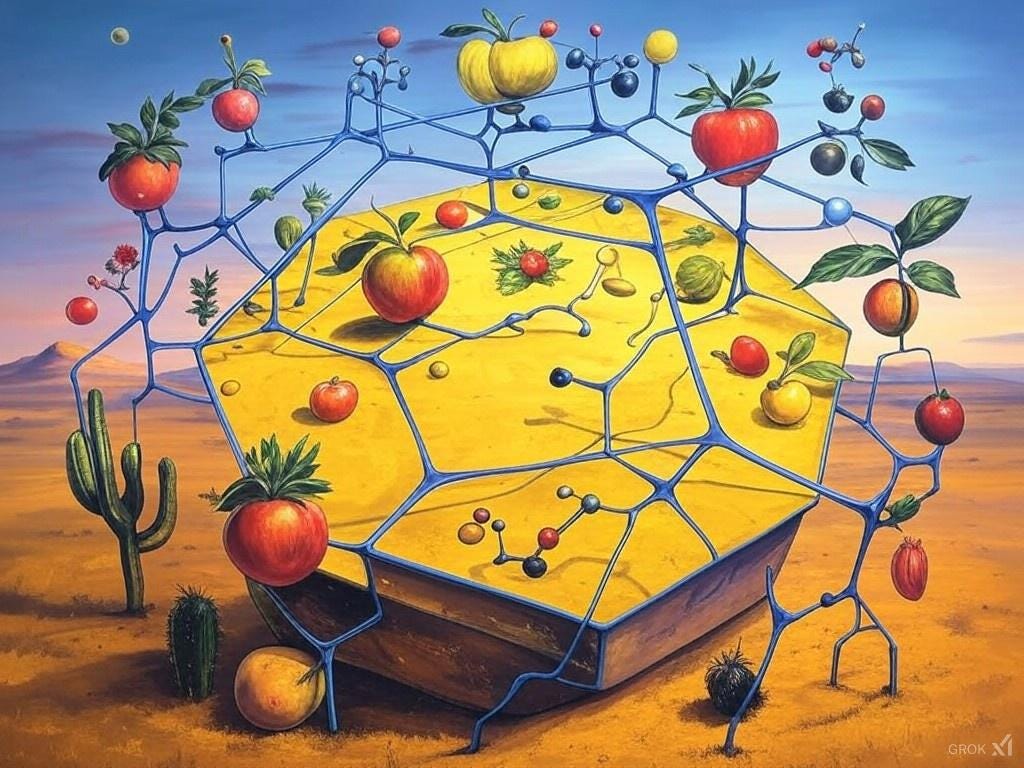Enhancing AI with Knowledge Graphs: How Grok Surpasses ChatGPT
In the ever-evolving field of Artificial Intelligence, the integration of knowledge graphs into AI models like Grok represents a significant leap forward in how these systems understand and interact with human queries. Here, we'll explore how Grok leverages Knowledge Graph Integration, and why this could be a game-changer compared to models like ChatGPT.
What is Knowledge Graph Integration?
A knowledge graph is essentially a network of interconnected information where entities (like people, places, or concepts) are nodes, and the relationships between them are edges. Knowledge Graph Integration in AI involves using this structured data to enhance the model's ability to understand complex queries, perform reasoning, and generate more accurate and contextually relevant responses.
Grok's Approach to Knowledge Graph Integration
1. Structured Data for Enhanced Context:
Grok integrates knowledge graphs to provide a structured layer of understanding over the unstructured text it processes. This means when you ask Grok a question, it can leverage not just the language pattern but also the factual relationships between concepts to form its response.
2. Dynamic Knowledge Updates:
Unlike static training data, knowledge graphs can be updated in real-time. This allows Grok to stay current with the latest information across various domains, from scientific discoveries to cultural events, ensuring its responses are timely and accurate.
3. Improved Reasoning Capabilities:
With knowledge graphs, Grok can reason about relationships that weren't explicitly in its training data. For instance, if it knows "X is the capital of Y" and "Y is in continent Z," it can deduce "X is in continent Z" without needing that exact data in its training set.
4. Semantic Understanding:
Grok can understand queries based on meaning rather than just keywords. This semantic understanding helps in providing more precise answers to complex or ambiguous queries.
5. Domain-Specific Expertise:
By tapping into specialized knowledge graphs, Grok can offer insights or answers in niche areas like astrophysics or medicine without needing extensive domain-specific training.
6. Explainable AI:
Responses from Grok can be traced back to specific nodes or paths in the knowledge graph, enhancing the explainability of its answers, which is crucial for trust and verification in critical applications.
Advantages Over ChatGPT
1. Accuracy and Fact-Checking:
While ChatGPT has access to a vast amount of text data, it sometimes generates responses that might not be factually accurate ("hallucinations"). Grok, with its knowledge graph integration, can reduce these inaccuracies by grounding responses in verified data structures.
2. Real-Time Information:
ChatGPT's knowledge is typically limited to its last training update, which can be months or even years behind. Grok's integration with dynamic knowledge graphs means it can respond to queries about recent events or discoveries with up-to-date information.
3. Complex Query Handling:
For queries that require understanding multiple layers of context or logical deduction, Grok's use of knowledge graphs allows for a more nuanced response. It can navigate through interconnected data points to formulate answers that consider broader contexts.
4. Scalability of Knowledge:
As new information is added to knowledge graphs, Grok can immediately benefit without the need for retraining, making it more scalable in terms of knowledge acquisition than models like ChatGPT, which might require retraining or fine-tuning to incorporate new data.
5. Domain-Specific Queries:
Grok can provide more authoritative answers in specialized fields by directly accessing domain-specific knowledge graphs, something that would require additional training or external data sources for ChatGPT.
6. Transparency and Trust:
The ability to trace responses back to knowledge graph elements gives users a way to verify information, fostering trust. This is particularly valuable in educational contexts or when dealing with sensitive information.
Conclusion
Grok's integration of knowledge graphs offers a compelling advantage in the AI landscape, particularly when compared to models like ChatGPT. By marrying the power of natural language processing with structured, updatable knowledge, Grok not only answers questions with greater accuracy but also adapts to the ever-changing tapestry of human knowledge. This approach not only enhances user interaction but also aligns with xAI's mission to advance our collective understanding of the universe through AI. As AI continues to evolve, the use of knowledge graphs in models like Grok could set new standards for what conversational AI can achieve.



